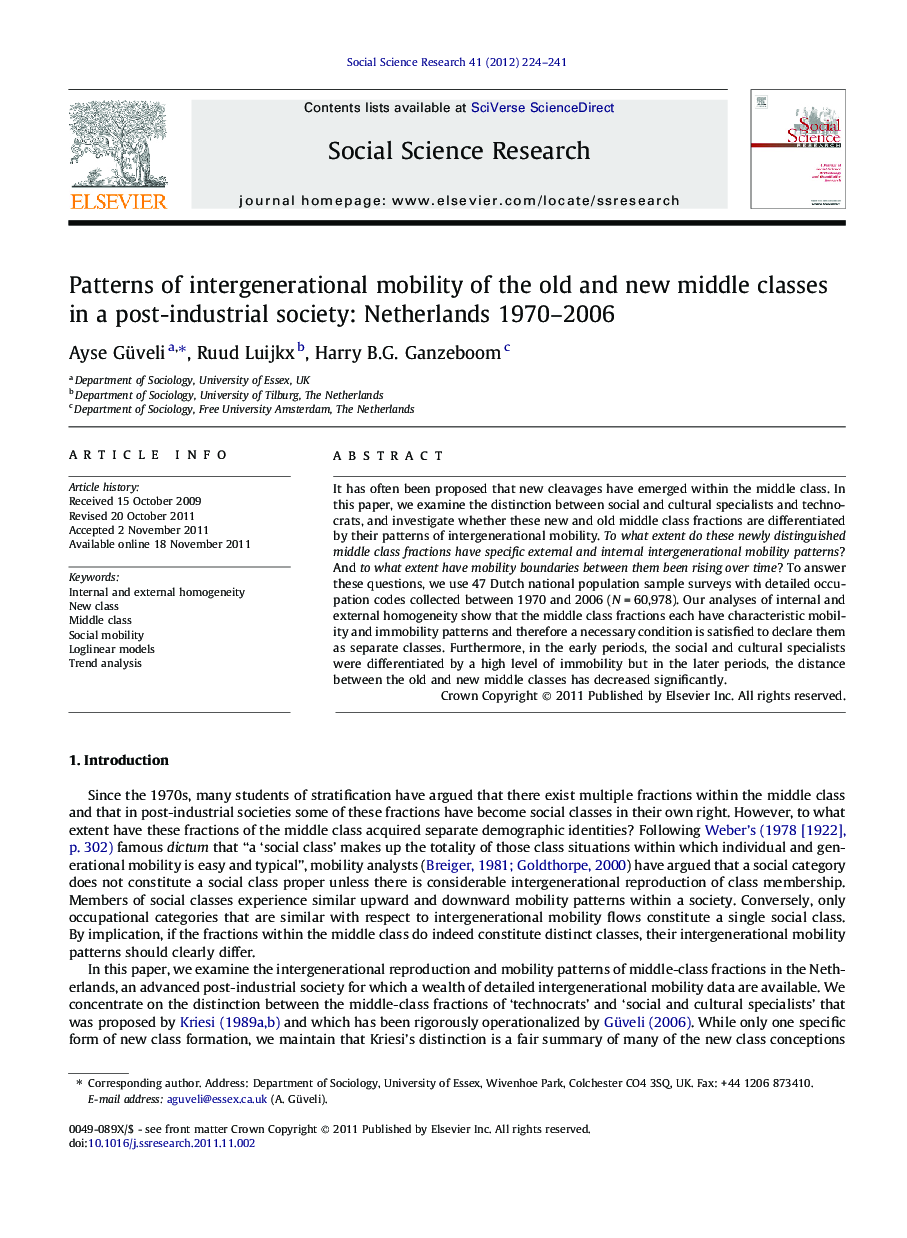| Article ID | Journal | Published Year | Pages | File Type |
|---|---|---|---|---|
| 955955 | Social Science Research | 2012 | 18 Pages |
It has often been proposed that new cleavages have emerged within the middle class. In this paper, we examine the distinction between social and cultural specialists and technocrats, and investigate whether these new and old middle class fractions are differentiated by their patterns of intergenerational mobility. To what extent do these newly distinguished middle class fractions have specific external and internal intergenerational mobility patterns? And to what extent have mobility boundaries between them been rising over time? To answer these questions, we use 47 Dutch national population sample surveys with detailed occupation codes collected between 1970 and 2006 (N = 60,978). Our analyses of internal and external homogeneity show that the middle class fractions each have characteristic mobility and immobility patterns and therefore a necessary condition is satisfied to declare them as separate classes. Furthermore, in the early periods, the social and cultural specialists were differentiated by a high level of immobility but in the later periods, the distance between the old and new middle classes has decreased significantly.
► Do the middle class fractions have specific external and internal mobility patterns? The study uses 47 Dutch national population sample surveys. ► The middle class fractions each have characteristic mobility patterns. ► Therefore a necessary condition is satisfied to declare them as separate classes.
